Content
Varieties of cucumbers with a bunched ovary appeared on sale recently, but quickly gained popularity among gardeners seeking to obtain large seasonal harvests. Just 15-20 years ago, early-ripening, medium-fruiting hybrids were grown in greenhouses, and ordinary varietal cucumbers were grown in open ground.
Bundle hybrids were obtained by breeders by crossing several varieties with a female ovary. Thus, these varieties began to produce from 4 to 10 fruits from one ovary node, which significantly increased the yield.
Growing and caring for bunch cucumbers
In order for bunch cucumbers to have a long growing season and produce a significant amount of fruit, they require special care. A large number of ovaries makes the plant weak, so hybrids of this type need regular feeding and compliance with certain rules during cultivation:
- Bunch cucumbers are not planted too close to each other. The maximum density between bushes in greenhouses is 2-3 seedlings per 1 m2, on open ground this figure can reach 3-4.
- At the beginning of the growing season, the plant must have a powerful root and a strong stem in order to “feed” and withstand numerous ovaries.
- If grown cucumber seedlings are intended for planting in open ground, then after transplanting they must be covered with film and stored there until active flowering begins.
- Bunch cucumbers It is advisable to plant in places protected from the wind. The plant is very heat-loving, and in a draft, a weakened stem will most likely simply die.
- Mandatory feeding of the plant with organic mineral fertilizer. The procedure is carried out in doses (no more than 15 grams per m2 once a week).
- To speed up the growth of greens, a large container with rotted grass or manure is installed in a greenhouse or greenhouse. Evaporating carbon dioxide activates the growth of plant cells, allowing you to quickly obtain the desired harvest.
Overgrown fruits remaining on the bush interfere with the appearance of new ovaries.
An important factor for growing bunch hybrids in open ground are supports. The best fruits and maximum yield are obtained from bushes tied to a trellis fixed on supports, 2 meters or higher in height. In this case, a mesh with a mesh size of at least 15 cm must be attached between the posts. New cucumber lashes are attached to it.
Bunch cucumbers require regular care and feeding. Despite the fact that vegetation in bunches is inherent in the plant at the genetic level, it can change due to improper watering or poor lighting.
At the same time, the plant should not be overfed with fertilizers.In case of abundant or improper feeding, tufts can form only on the lower ovaries of the stem. The optimal conditions for growing cucumbers are maintaining the required temperature (without sudden fluctuations) and relatively high air humidity. That is why bunched cucumbers are recommended to be planted in equipped greenhouses or in open ground in the summer, when the air temperature is stable.
How to choose the best variety for planting
Hybrids of bunch cucumbers are divided into several types, the main of which are insect-pollinated or parthenocarpic. The former, as a rule, are grown in open ground or greenhouses specially equipped with an opening roof. The latter are adapted for film greenhouses and greenhouses.
Both of them may differ in branching. For high greenhouses and open ground with equipped supports, varieties with good and limited branching are suitable, for low greenhouses and greenhouses - with weak branching.
Advantages of varieties with good branching
The plants are characterized by a long growing season and high yield. For central Russia, the following varieties are recommended: “Maryina Roshcha F1”, “Three Tankmen”, “Chistye Prudy”, “Thumb F1”, Junior Lieutenant”.
Features of growing cucumbers with limited branching
These plants do not require regular pinching, are easy to care for and have a fairly long growing season. The best varieties - "Cheetah F1", "Ant F1", "Grasshopper F1", "Trump Card".
The best varieties of cucumbers with weak branching
An excellent option for large seasonal harvests. The growing season lasts from 1 to 1.5 months. Weak side branches are short and do not require pinching. The best varieties - “Balalaika”, “Bouquet F1”, “Alphabet F1”.
Slow growth
It is clear that harvesting bunched cucumbers is a regular and labor-intensive process. But what about those who appear on their plots only on weekends? Is it possible to grow a good harvest by caring for cucumbers 2-3 days a week?
Especially for summer residents, domestic selection has developed several varieties of bunch cucumbers with intentionally slower fruit growth. Thanks to this, the cucumbers on the bush have practically no opportunity to outgrow, and do not take away the strength of the greens. The crop can be harvested once a week.
The most popular among them are the insect-pollinated varieties of cucumbers “Captain F1” (pictured above), “Acorn F1”. Self-pollinating – “Be Healthy”, “Balcony F1”, “Karapuz F1”.
Bundle cucumbers with slow fruit growth have another characteristic feature - their miniature and unpollinated fruits are perfect for canning. And such a hybrid as “Balcony” is unpretentious in care and produces large yields, adapting to any growing conditions.
The most popular varieties of bunch cucumbers
Properly planted and well-grown cucumbers with bunched ovaries, on average, can produce up to 20 kg of yield from one bush. When choosing a variety, be sure to read the instructions and study the basic care conditions.
The following are popular and in demand today:
Avalanche F1
Refers to early ripening varieties intended for growth in greenhouses, greenhouses and open areas of land. One bunch produces from 4 to 6 cucumbers. The growing season is 1.5 months, and the resulting fruits reach 8 to 10 cm in length.The variety is universal, and the crop can be used both for preparing salads and for canning.
Mother-in-law F1
A self-pollinating, early-ripening variety of cucumbers that thrives both in greenhouse conditions and in open ground. Up to 4 medium-sized fruits are formed in a bunch, the average weight is 100 g. Distinctive features of this type are increased genetic resistance to fungal diseases and low temperatures.
Bogatyr strength F1
Cucumber is famous for its long growing season and high yield. It is grown both in greenhouses and in open ground. The average number of ovaries in a bunch is 8 pcs. The length of one cucumber during ripening can reach 12-15 cm.
Green wave F1
This variety is considered the most productive among bunch hybrids. Green wave is resistant to temperature changes and viral infections characteristic of greenhouse varieties. As you can see in the photo, the average number of ovaries in the nodes is 8-10.
Ajax F1
A hybrid whose seeds are imported to us from Holland. When fully ripe, cucumbers reach a length of up to 15 cm and a weight of up to 100 grams. The variety is considered the most delicious among bunch hybrids and has enviable stability in obtaining large yields.
Piccolo F1
Self-pollinating early-ripening hybrid, intended for cultivation in greenhouses and open ground. The first fruits ripen already on the 40th day after transplanting the seedlings into the soil. The cucumber does not require regular watering and care, is resistant to powdery mildew, fungal diseases, and produces stable, long-term fruiting.
Excelsior
Another new variety of bunched cucumbers grown by Dutch breeders. As you can see in the photo, they are extremely beautiful. Up to 8 fruits, 10-12 cm in size, ripen in one bunch.The hybrid is universal and ideal for canning and pickling. In addition, this variety does not lose its appearance during long-term transportation.
Growing bunch cucumbers involves some difficulties that are not inherent in ordinary cucumber varieties. But, despite this, they are becoming increasingly popular among gardeners who want to get stable and rich harvests.
When purchasing seeds for seedlings, be sure to consult with the seller about the characteristics of growing a certain type and variety, its resistance to changing weather conditions, and susceptibility to diseases. Follow all growing instructions strictly.
Reviews
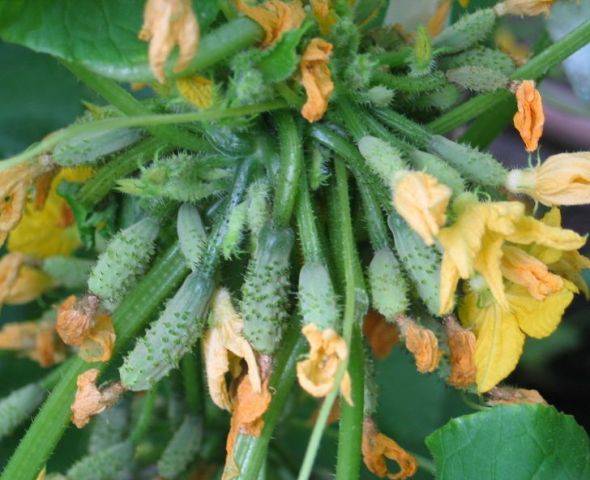
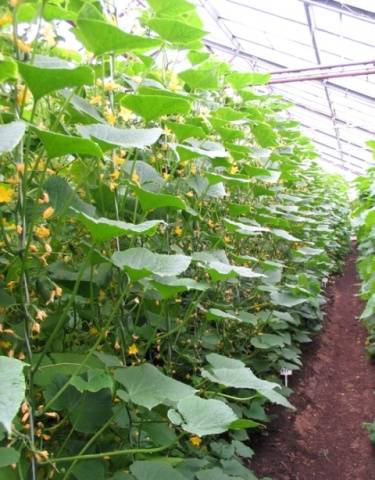
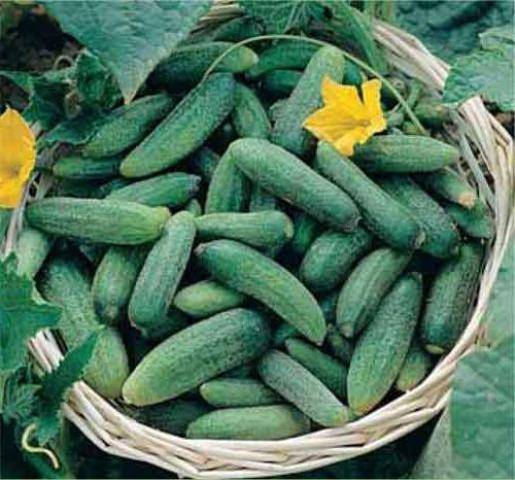
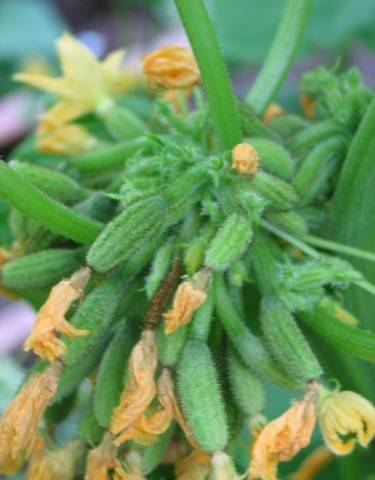
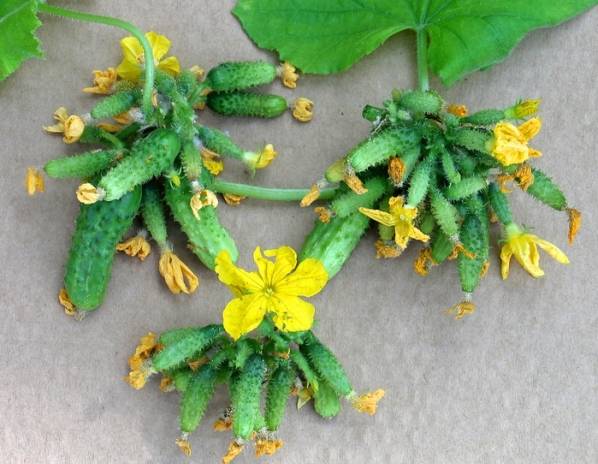
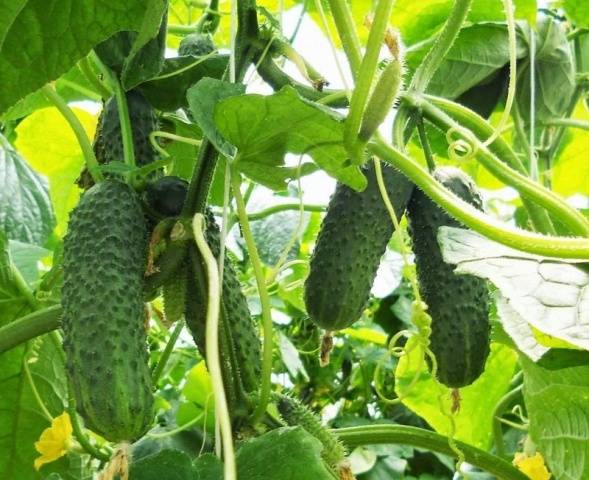
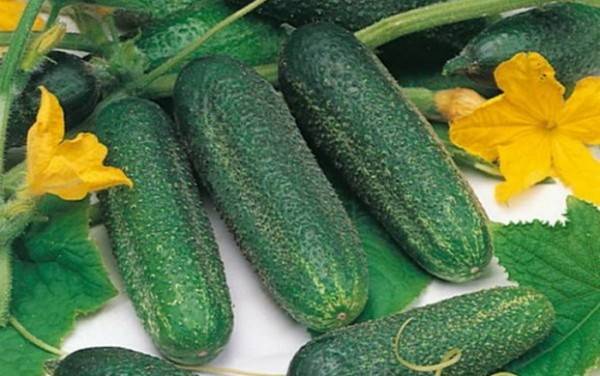
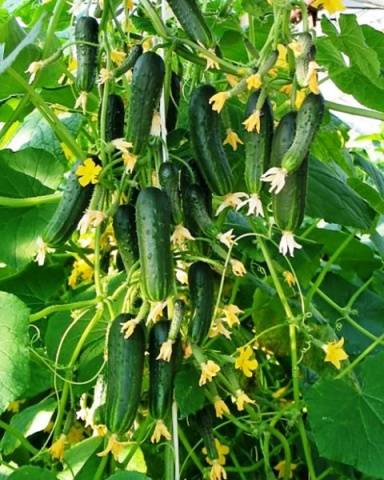
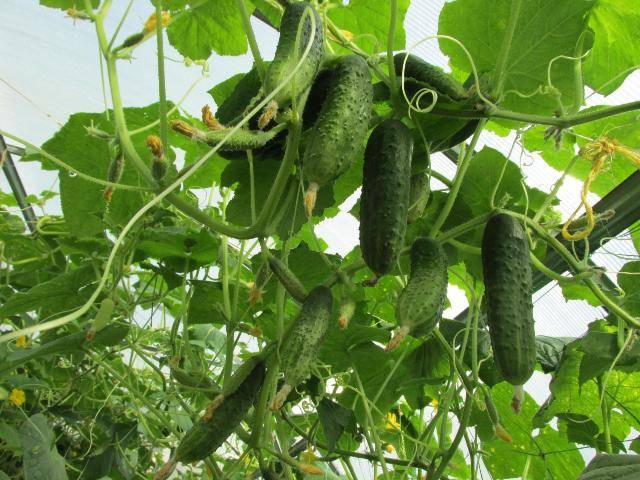
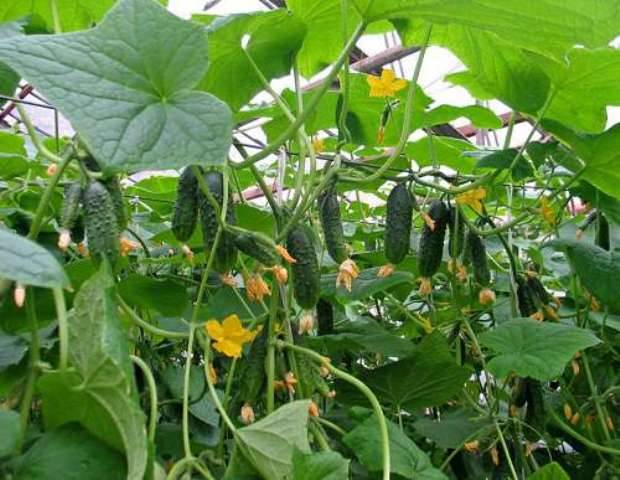
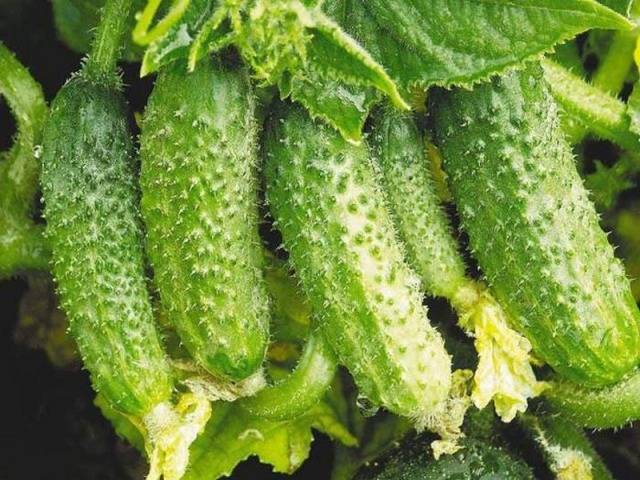


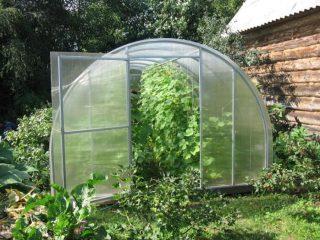
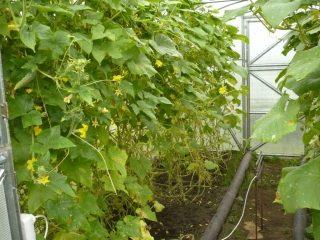




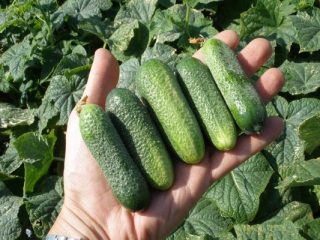
Well, in principle, I agree. Although the og was not indicated here. Zyatek (Gavrish).You just need to take it in the manufacturer’s packages...